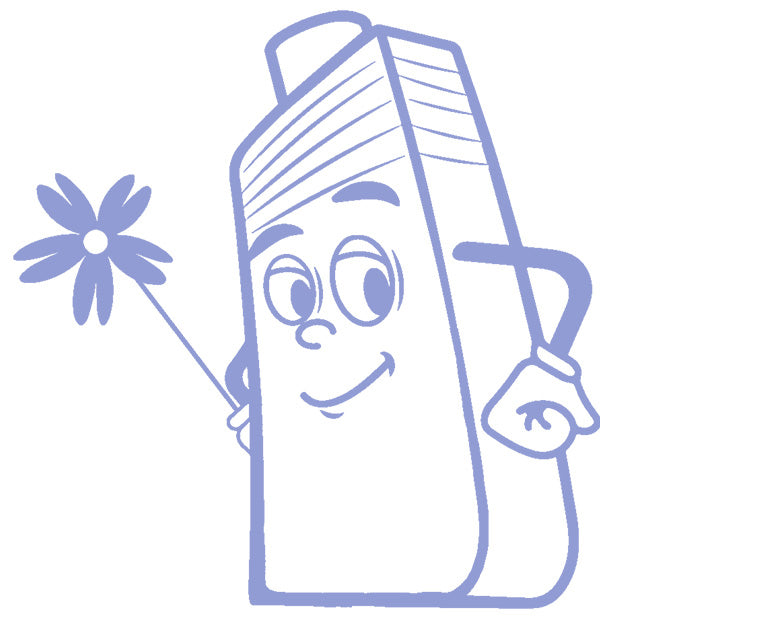Sometimes treating hair breakage can be as simple as applying a nourishing hair mask or using a brush designed for gentle detangling.
I’ll take you through what causes severe hair breakage, what it can look like, and various treatments to put in place to reduce hair breaking off.
Index
What is Hair Breakage?
When the outer layer, the cuticle, of your hair strand becomes frail and brittle, it can cause hair to break. Hair breakage can look like split ends or dry or damaged-looking hair. Severe hair breakage can make your hair look frizzy with a lot of split ends or with a lot of shorter, broken hair.
There are a variety of reasons for what causes hair breakage, but I’ll get more into that in a minute.
It’s important to keep in mind that even if you practice healthy hair care, you can still be susceptible to broken hair.
Hair Breakage vs. Hair Shedding

Before I proceed with what causes hair breaking off, it’s important to understand the difference between hair breakage and shedding. Broken hair is due to damaged and dry hair strands splitting and snapping off. This is different from shedding, which is a normal part of your hair’s life cycle.
Your hair goes through a growth cycle and shedding is part of it. It’s perfectly normal to shed anywhere between 30 and 150 hairs each day.
Signs of normal hair shedding are full hair strands falling out, typically with a white bulb at the end from where it came out of the follicle. I notice most of my hair shedding occurs in the shower. When I massage my scalp with shampoo, it dislodges any hair strands that were already loose. If you're concerned you are experiencing more than normal hair loss, here are some symptoms and causes of hair loss in women.
Here are some signs to indicate if your hair is breaking and not just shedding:
Signs of Hair Breakage
- Frayed and split ends
- Extreme and frequent tangles
- Short broken pieces falling out
- Hair that is very dry and feels brittle to the touch
- Curls and coils are more prone to frizz and aren’t as defined
Signs of Severe Hair Breakage:
- Hair thinning
- Noticeable loss of hair on the scalp
- A lot of hair breakage at the crown
Hair Types Prone to Hair Breakage
Gray Hair
As we age, our hair slowly loses its ability to retain moisture. It also becomes finer due to the outer cuticle layer becoming thinner. This can cause the hair to be brittle and dry, resulting in broken hair.
To learn more about gray hair, here’s a full guide for gray hair.
Coarse Hair
Coarse hair strands are thicker than normal hair and the most common type of coarse hair is curly or coily hair. This type of hair can be susceptible to breakage because it’s prone to dryness. If you have split ends, hair that’s very dry to the touch, or curls that don’t have as much bounce, you may have hair breakage.
Read these tips on the best way to care for your curly hair.
Fine Hair
Fine hair is smaller in diameter than normal or coarse hair, making it more fragile and prone to breakage. Fine hair is vulnerable to split ends and broken hair pieces from aggressive brushing, towel drying hair, or using heat products. It can also be vulnerable to knots and tangles that can further damage the hair.
Damaged Hair
If you frequently process your hair with bleach or harsh chemicals, overheat your hair strands, or spend a lot of time in the sun, you’re damaging your hair. When hair is damaged, it tends to be brittle and unable to retain moisture.
More severe hair breakage in damaged hair will look like stringy hair with a gummy texture, or hair breaking off closer to the root.

High Porosity Hair ( I.)
Porosity refers to how well your hair strands can retain and attract moisture.Hair with high porosity means your cuticle layer has large gaps, allowing it to take in moisture but not retain it. This results in hair that’s unable to stay hydrated, and prone to hair breakage.
Low Porosity Hair ( II.)
Low porosity hair, opposite to high porosity, has tightly closed cuticles. The cuticle layer can't draw in moisture, resulting in hair product sitting on the hair rather than being absorbed, causing the hair to become brittle and break off.
Low porosity hair also has higher levels of protein, so using products with protein can cause further damage. Instead, you need to be using humectant products that draw in moisture.
12 Common Causes of Hair Breakage & Treatments
Here are 12 common hair breakage causes. Don’t worry, I’ve included hair breakage treatments and tips under each.
1. Heat Damage
Everyone likes styled hair, but using heat tools regularly on your hair is not doing you any favors. Hairdryers, curlers, or hair straighteners can dry out your hair excessively and damage the cuticle layer. If you use heat tools without heat protectant products beforehand, it’s even more harmful. This is also true for sun damage. UV damage can be just as bad as heat damage from a hair tool, so make sure you take precautions.
Hair Breakage Treatment:
Instead of using heating tools to style, go for heatless style options for your hair. If you need to use a heating tool, always use a heat protection spray, such as Thermal Shield™ Heat Protectant before to protect your cuticle layer. To protect your hair from the damaging sun rays, opt for a moisturizing mist with a natural UV-filter, like Sun Defense Hair Mist.
2. Chemical Damage
Getting frequent chemical treatments like permanents, relaxations, or bleaching can cause a lot of damage to your hair. These types of treatments and processes break down the cuticle of your hair and make it very difficult to repair. Hair can become gummy, stringy, and come out in clumps, resulting in severe hair breakage.
Hair Breakage Treatment:
Getting fewer treatments will help with this, along with using a Protein Repair™ Hair Mask that effectively repairs and straightens your hair cuticle with plant based micro proteins.
3. Dryness
Dry hair means your hair isn’t getting enough moisture or is not able to retain it. I suffer from dry hair and it can be quite demanding to take care of. Using heating tools, excessively brushing, or not regularly de-tangling can result in split ends or broken hair.
Hair Breakage Treatment:
Using a nourishing Split Fix™ Hair Mask and sleeping on a silky soft Silky Bamboo Pillowcase helps keep my hair moisturized and less prone to breakage.
4. Diet
What we eat can greatly impact the health of our hair, and a poor diet can make hair look dull and cause dry and brittle textures.
It’s important to get the proper nutrients like protein and omega-3 fatty acids as well as vitamins like biotin and zinc into your diet for healthy hair. Making sure you are drinking enough water is also very important to healthy hair. After all, we are what we eat, and the human body is made up of about 50%-60% water.
Hair Breakage Treatment:
Maintain a daily water goal and make sure you get enough quality vitamins and minerals for a healthy diet. Taking Hair Formula Gummies or Tablets for Women can help you get all the vitamins and nutrients you need for healthy hair.
5. Stress
It’s no secret that stress can cause a host of issues in the body. Telogen effluvium is a type of hair loss and breakage that can occur from stress.
Hair Breakage Treatment:
Maintaining and practicing mental health care is essential. Ensuring you get enough sleep, giving yourself mental breaks by meditating, and exercising can all help to reduce stress.
6. Tight Hairstyles
You could be causing severe hair breakage from the way you style your hair. Tight ponytails or buns that involve twisting or wrapping around and securing with a tight hair tie or metal clips are damaging your hair.
Hair Breakage Treatment:
Let your hair down more or use Hair Rings or claw clips that are gentler on your hair.
7. Rubbing With a Towel
Vigorously drying your hair with a towel can create broken and static hair from friction. Being rough or aggressive at all with your hair is damaging.
Hair Breakage Treatment:
Ditch using a big towel to rub your hair dry and wrap it in a gentle Bamboo Hair Towel Wrap instead.
8. Excessive Brushing
It’s true that hair that gets tangled often can result in broken hair. However, brushing your hair too much can also create split and broken ends.
Hair Breakage Treatment:
Gently brush your hair in the shower using a Wet Hair Detangler Brush or wide-toothed Bamboo Comb, and start at the ends. This will help keep your hair detangled once it’s dry and can help reduce tangles.
9. Washing Too Often
No one wants greasy hair, but washing your hair too frequently can strip it of healthy oils. Healthy oils in our hair keep our hair moisturized, shiny, and healthy.
Hair Breakage Treatment:
Try to go longer in between hair washes to make sure your hair is not being stripped. For extra hydration, use an Moisture Hero™ Pre-Shampoo Balm before shampooing. In between washes, keep your hair nourished, protected and hydrated with Split Fix™ Leave-in Conditioner.
10. Using the Wrong Products for Your Hair
It happens to the best of us, we buy a product thinking it’s going to solve our hair needs but ends up falling short and causing more damage.
Hair Breakage Treatment:
Avoid using products with harsh sulfates and silicones. While some people’s hair can withstand these types of ingredients, that isn’t the case for everyone.
I do my best to go for sulfate-free hair products like a Split Fix™ Shampoo and Conditioner for gentle cleansing and conditioning of damaged hair.
11. Not Getting Regular Trims
Getting regular haircuts helps your hair grow healthy and strong. When I don’t get regular trims, I tend to get split ends, so anything that does grow immediately breaks off.
Hair Breakage Treatment:
Regular haircuts keep your ends healthy and strong. Unfortunately, if you do have split ends and have not had a haircut in a while, you’ll need to cut off quite a bit at first. It will help in the long run though and allow your hair to grow longer. Try to trim your hair every 12 weeks to keep it healthy and strong. Is it time for a fresh haircut? Check out 10 trendy long haircuts here.
12. Health issues
Certain health conditions can cause hair to break. Those with hypothyroidism may experience dry or brittle hair or hair loss. The thyroid gland can impact many things in our bodies and one is hair health and growth.
Certain eating disorders will also cause hair loss and hair damage. Due to malnourishment, your hair may not be getting the proper nutrients it needs to grow healthy and strong.
Hair Breakage Treatment:
If you suspect that you have a health issue that’s causing hair loss, speak to your GP.
Does Hair Breakage Go Away?
Luckily, even severe hair breakage is usually temporary. Following the hair care practices above will get you back on the road to healthy and unbreakable hair.
I hope I’ve answered your questions about hair breakage and you feel confident in how to tackle it.























































































